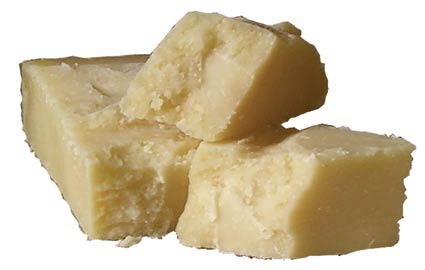|
|
Cheese on a low-lactose diet |
|
by Anita MacDonald and Pat Portnoi. This article first appeared in Network Health Dietitians in April 2009. |
|
There are hundreds of types of cheese produced throughout the world. Some mature hard cheeses are known to be low in lactose but there is a scarcity of analysis data, and any existing information is inconsistent and variable. Inclusion of cheese in a low lactose diet is difficult without quantitative information about its lactose content. It would be useful to be able to include mature hard cheese in a low lactose diet: it is versatile, will add variety, increase palatability and enhance the nutritional quality of the diet. Cheese is made by coagulating milk. This transfers milk into a semi-solid mass and
separates milk into solid curds and liquid whey. Cow’s milk is ideal for cheese-making because it contains high levels of casein which is required to provide an adequate coagulum. Most cheeses contain high levels of casein but low levels of whey. It is whey that is particularly rich in lactose. Whey contains 70% lactose, and casein no more than 1% lactose. In fact the origin of the word cheese appears to be the Latin caseus, from which the modern word casein is
derived. Some cheeses have a starter culture of bacteria added that increases lactic acid content and so reduces lactose concentrations. The temperature of coagulation, starter culture, coagulating enzyme and the acid produced, influences the properties of the curd and degree of whey expulsion, and hence the final lactose content. Generally the longer the cheese has matured the lower the lactose content. Maturation of cheese can last from a few days to several years. The cheeses are exposed to a temperature and humidity controlled environment for a specified length of time. During ripening hydrolysis of lactose occurs, the extent of which is influenced by the starter culture and any variations in process. Can the lactose content of cheese types vary? Cheeses that contained lactose, and therefore were unsuitable, included other mature and mild Cheddar cheeses, Gouda, Edam, BabyBel Emmental, Brie and processed cheeses (cheese triangles and cheese spread). Is all Parmesan lactose free? In conclusion, the lactose content of over 119 cheese samples from 13 cheese types have been analysed for their lactose and galactose content. Five cheese types (Gruyere, Emmental, Jarlsberg, Parmigiano Reggiano and Grana Padano and West Country Farmhouse mature Cheddar) have been identified to have consistently low lactose content when repeated analysis has been conducted. These cheeses should be suitable for any patient with lactose intolerance as well as galactosaemia. As far as Wallace and Gromit are concerned, we did not analyse Wensleydale cheese for its lactose content – so sorry to disappoint all ‘Wallace’ fans! References Dr Anita Macdonald is one of the UK’s top paediatric dietitians; she specialises in inherited metabolic disorders. First published in 2009 Click here for more articles on lactose intolerance
|













